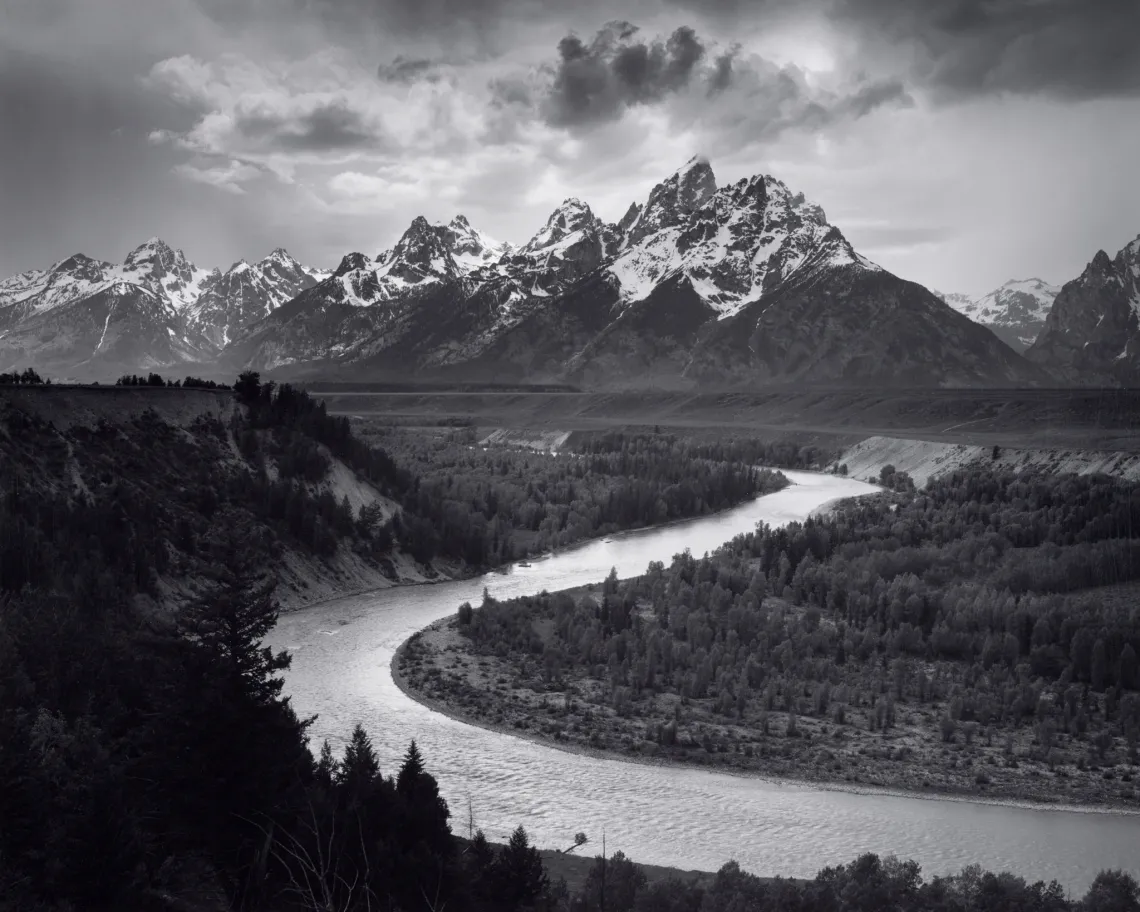Portrait of a Young Ansel Adams
Adams’ early work is not as well known, but it is crucial to understanding his development as an artist.
A 14-year-old took a Kodak Brownie box camera along on a vacation to Yosemite in 1916. He made snapshots of waterfalls and rocks, just experimenting. A new biography of Ansel Adams traces how he went on to teach himself the techniques of a true master, creating a stylistic photo language to teach the world about wilderness.

Ansel Adams, “The Tetons and the Snake River, Grand Teton National Park, Wyoming,” 1942. Center for Creative Photography, University of Arizona. © The Ansel Adams Publishing Rights Trust
“Making a Photographer: The Early Work of Ansel Adams,” published by Yale University Press and the University of Arizona Center for Creative Photography, is by Rebecca Senf ’94, chief curator at the CCP. She argues that while Adams’ early work is not as well known as the iconic images he became famous for, it is crucial to understanding his development as an artist.
In tracing Adams’ early decades as a photographer, Senf also reveals how this city boy became one of the best-known mountaineers ever, and the book will reward not only fans of photography but also those interested in the evolution of a wilderness advocate.
Senf also explores how Adams imagined a greater audience that came to include, by design, much of the art world of the 1930s and 1940s. And a delightful section covers Adams’ work for Yosemite Park as a promoter of sleds, sleigh rides and “freshly fallen snow” as well as the other commercial work he took on to survive, including portraits, shots of homes and buildings for architects, and promo photographs for wineries and banks.
Adams’ early work at Yosemite was intimate, subdued and subtle, in a language that was not widely accepted, Senf says. An example is the meadow scene “Forest in Yosemite Valley,” from 1920. The photo was taken from so close that the image cut off the tops of the trees, leaving mostly trunks and just a peek at cliffs in the background.
Later, his sweeping style evolved, such as in the stunning “Moonrise, Hernandez, New Mexico,” taken in 1941. Senf includes not just the classic version but also two others with different effects, always with the tiny chapel and graveyard with its crosses below, as she says, “the endless quality of the sky.”
The CCP, recognized as one of the world’s finest academic art museums, owes its existence to a 1974 meeting between Adams and John P. Schaefer, then the University of Arizona president and an accomplished photographer himself. Together, they launched the CCP with Adams’ lifetime collection of prints and negatives. Today, the center’s collection includes 270 archival collections.
